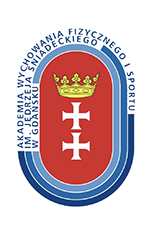Abstract
Background: The aim of the study was to assess the effectiveness of the myofascial self-massage technique of the gastrocnemius muscle in determining the possibility of increasing pain tolerance and individual pain threshold, which could increase exercise efficiency, allow for greater training loads and accelerate post-exercise regeneration, as well as to determine the subjective assessment of pain intensity using the VAS scale. Material and Methods: 85 students at Gdansk University of Physical Education and Sport took part in the research, including 37 women and 48 men aged 19–25 years. (M = 20.7; SD = 1.07). The test consisted of applying pressure with a pressure algometer with a rubber head to the gastrocnemius muscle of the right and left lower limb in order to determine the individual pain threshold (PPT) and individual pain tolerance (PTOL). The participant lay on the couch on his stomach with his feet protruding beyond the couch in order to keep the gastrocnemius muscle relaxed during subsequent trials. PPT and POL testing were performed before and after the rolling intervention. The intervention consisted of performing a flat self-massage with a foam roller along the gastrocnemius muscle in a sitting position on the floor, with smooth up and down movements lasting 3 seconds each. The participants repeated the procedure 8 times on the right and left limbs. The participants moved the roller and twisted the leg, rolling the entire gastrocnemius muscle. Results: The study did not observe statistically significant changes in PPT and PTOL after the rolling intervention. The results were similar both before and after the rolling intervention. The visual analog scale VAS showed a statistically significant decrease in the patient's assessment of pain intensity, both in the right (6.8 ±1.46 vs 7.17 ±1.52, p = 0.02) and the left leg (6.77 ±1.36 vs 7.24 ±1.44; p < 0.01). A single intervention of myofascial self-massage performed with a flat foam roller along the gastrocnemius muscle did not change the perception of the individual pain threshold (PPT) and individual pain tolerance (PTOL). The results measured using a pressure algomed and presented in kilopascals (Kpa) were significantly similar to each other, both before and after the rolling intervention. The improvement after performing the SMFR technique was visible in the subjective assessment of pain intensity using the VAS visual analogue scale. Analyzing other authors’ studies, it is worth conducting further research on the impact of the SMFR technique on the perception of pain threshold and pain tolerance.
Recommended Citation
Pawlikowska K, Jazdzewska A, Kortas J. The effectiveness of myofascial massage of the gastrocnemius muscle on the threshold and pain tolerance. Balt J Health Phys Act. 2025;17(2):Article6. DOI: 10.29359/BJHPA.17.2.06
Author ORCID Identifier
Karolina PAWLIKOWSKA; ORCID 0009-0001-5886-4106
Aleksandra JAŻDŻEWSKA; ORCID 0000-0002-7518-855X
Jakub KORTAS; ORCID 0000-0003-2364-0214
Creative Commons License

This work is licensed under a Creative Commons Attribution-Noncommercial-No Derivative Works 4.0 License.
Included in
Health and Physical Education Commons, Sports Medicine Commons, Sports Sciences Commons, Sports Studies Commons



